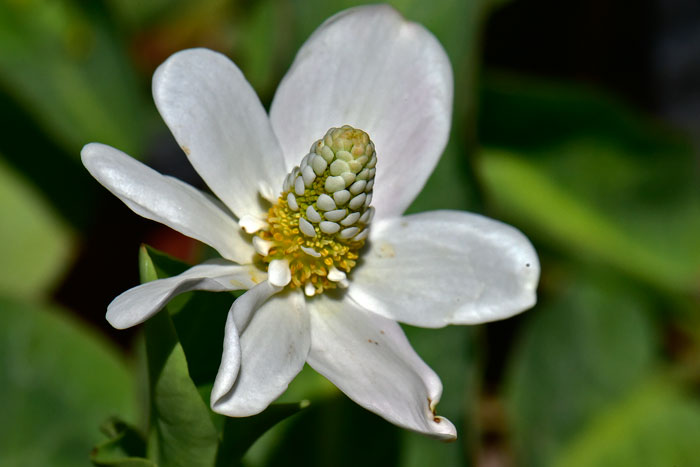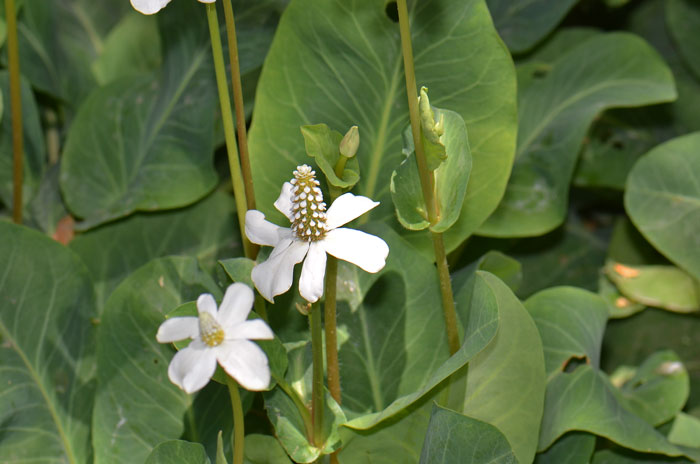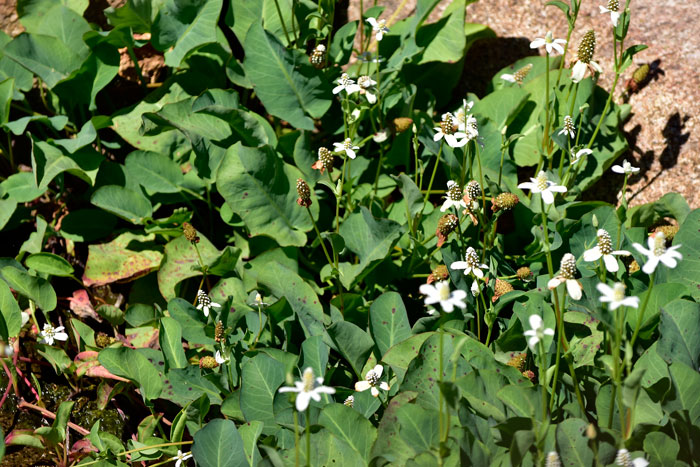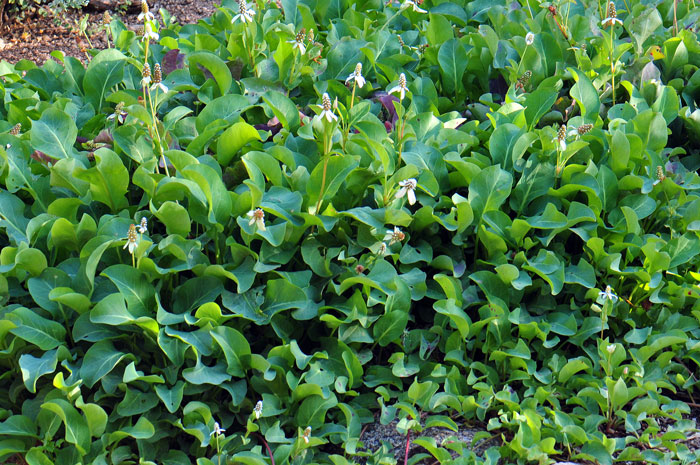Anemopsis californica, Yerba Mansa




Scientific Name: Anemopsis californica
Common Name: Yerba Mansa
Also Called: Lizard's Tail, Yerba-mansa (Spanish: Yerba del Manso, Hierba del Mansa, Yerba del Manzo)
Family: Saururaceae, Lizard's-tail Family
Synonyms: (Anemia californica, Anemopsis californica var. californica, Anemopsis californica var. subglabra)
Status: Native
Duration: Perennial
Size: Up to 15 inches or more.
Growth Form: Forb/herb; creeping rhizomes, thick woody, stems hollow, woolly or without glabrous.
Leaves: Green, dull green; mostly basal and somewhat fleshy, shape variable elliptic, oblong or cordate, mostly sub-sessile or clasping and sometimes with a short petiole.
Flower Color: White, sometimes with a reddish ting; inflorescence a dense cylindric spike with large white petal-like bracts looks like a single "flower" of a Sea Anemone, flowers perfect, small without a perianth; fruit a capsule
Flowering Season: May to August; March to September in California; and Texas.
Elevation: 2,000 to 5,500 feet; 200 to 5,000 feet in California; below 6,500 feet in Texas.
Habitat Preferences: Wet, saline or alkaline soils, wet or moist areas, seeps and springs.
Recorded Range: Anemopsis californica is found primarily in the southwestern United States of AZ, CA, NM, NV, TX and UT; and in CO, KS, NE, OK and OR. It is also native throughout Baja California and central and northern Mexico. In Arizona it is found throughout most of the state with few or no records in Coconino, Gila, Greenlee, LaPaz, and Yuma counties.
North America & US County Distribution Map for Anemopsis californica.
U.S. Weed Information: No information available.
Invasive/Noxious Weed Information: No information available.
Wetland Indicator: In North America Anemopsis californica has the following wetland designations: Arid West, OBL; Great Plains, FACW; Western Mountains, Valleys, and Coast, OBL.
OBL = Obligate Wetland, almost always occur in wetlands
FACW = Facultative Wetland, usually occur in wetlands, but may occur in non-wetlands.
Threatened/Endangered Information: No information available.
In the United States, Anemopsis is found in all southwestern states. All data is approximate and subject to taxonomic changes.
Comments: Anemopsis californica is an aromatic, monotypic genus and aromatic on warm days.
Anemopsis californica has been used for a variety of purposes by Central and Southwestern American indigenous peoples.
Cahuilla Drug, Cold Remedy, Infusion of plant used for colds.
Diegueno Drug, Unspecified, Plant used as medicine.
Kawaiisu Drug, Cough Medicine, Decoction of broken roots taken for coughs.
Mahuna Drug, Dermatological Aid, Powdered plants used as a disinfectant for knife wounds.
Paiute Drug, Venereal Aid, Infusion of roots taken for gonorrhea.
Pima Drug, Diaphoretic, Infusion of plant taken for colds and to cause sweating.
Shoshoni Drug, Gastrointestinal Aid, Decoction of roots taken for stomachaches
See ethno-botanical uses at Native American Ethnobotany, University of Michigan, Dearborn.

